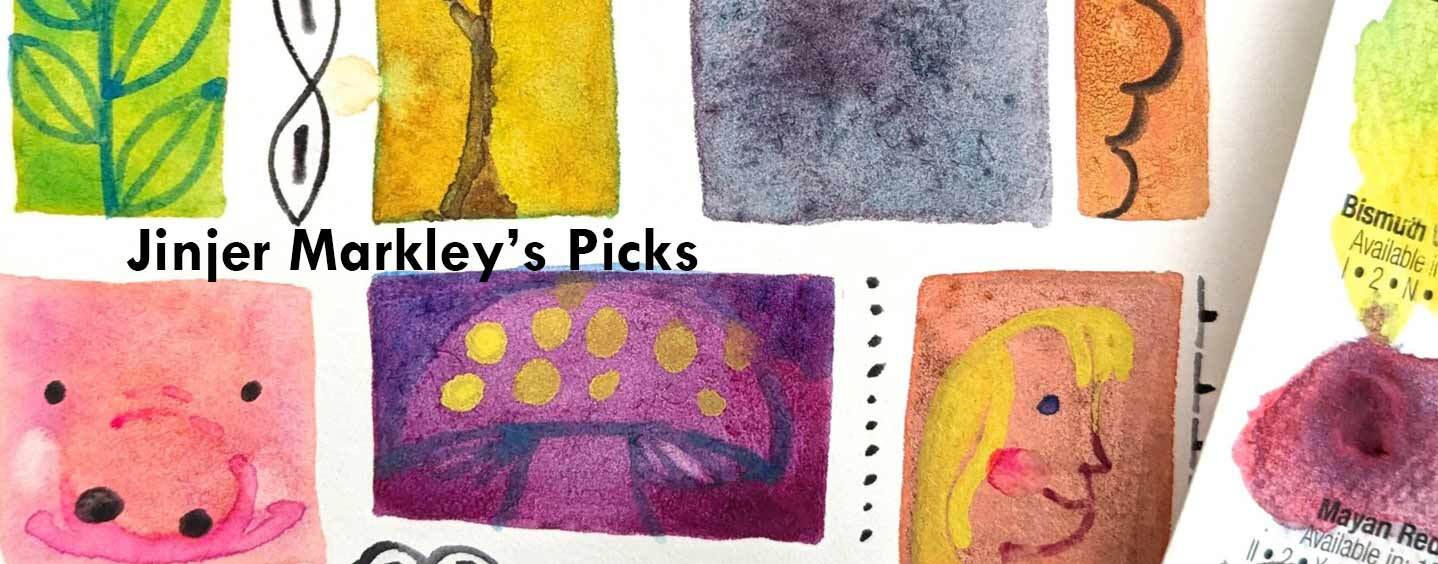1 . Ultramarine Blue has a classic granulating texture—the color settles in granules. It is also brighter than any medium-blue you can mix. It's a sinker—I'll explain that later.
Granulating textures are most obvious when painted on cold-press paper.
2. Pyrrole Orange has a smooth texture—the color tends to spread evenly over the entire swatch. It is also brighter than any orange you can mix. It's a sinker.
3. Phthalo Green, YS has a texture I call drifting texture. It sometimes gets marked as granulating, and sometimes non-granulating, but it's different from either—the color tends to settle in drifts, rather than granules. Drifting texture is most obvious when painted on hot press paper. Pthalo Green is also a brighter green than any green you can mix, especially when dark. It is a floater—I'll explain that soon!
4. Moonglow is a mixture of colors specially formulated to look like grey from a distance and MAGIC up close. How did Daniel Smith achieve this magic? By mixing pigments with different textures and densities! I introduced texture with the first three paints. As for density, paints can be floaters or sinkers. Smooth or drifting floaters tend to mix together nicely, creating even color. Granulating paints and sinkers tend to settle out of mixtures, creating MAGIC. Try making your own magic!
5. Cobalt Teal Blue is a granulating sinker, and tends to settle out of mixes. It's also very close to the true primary color cyan, making it an unmixable color. It can be used to mix very bright greens. However,' it has a light masstone and low tinting strength, meaning it can't be used to mix dark, bright colors.
6. Cobalt Violet is a granulating sinker, and tends to settle out of mixes. It's close to the primary color magenta, making it an unmixable color. However, it has a light masstone and very low tinting strength, so it can't be used to mix dark, bright colors. For an interesting color experiment, mix it with a tiny bit of pyrrole orange to make a red.
7. Mars Yellow is a granulating sinker, and tends to settle out of mixes, but not as strongly as the first two. It also has a delicious, buttery painting texture that makes it a favorite on my palette.
8. Lunar Black is a granulating sinker, and tends to settle out of mixes, giving them a dramatic texture.
9. Opera Pink is a granulating floater. Mixtures will show very bright pink granules settling out of an otherwise evenly mixed color. It's also a super bright color, and close to primary magenta. Try mixing it with yellows to make super-bright reds.

